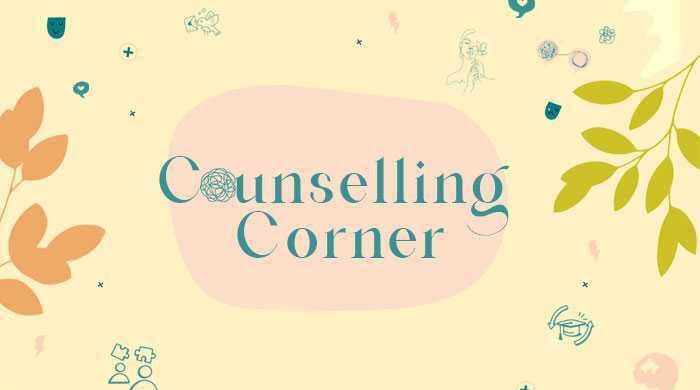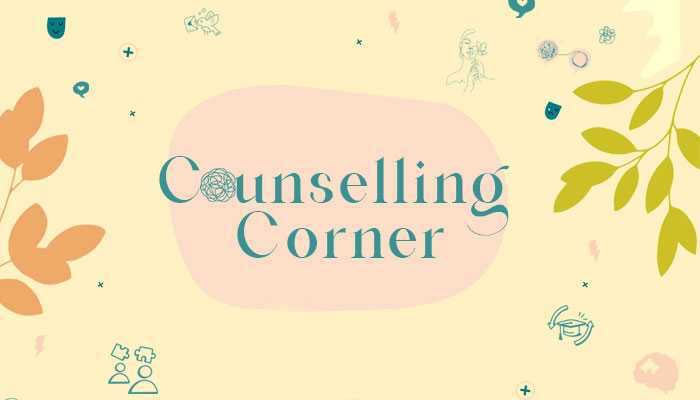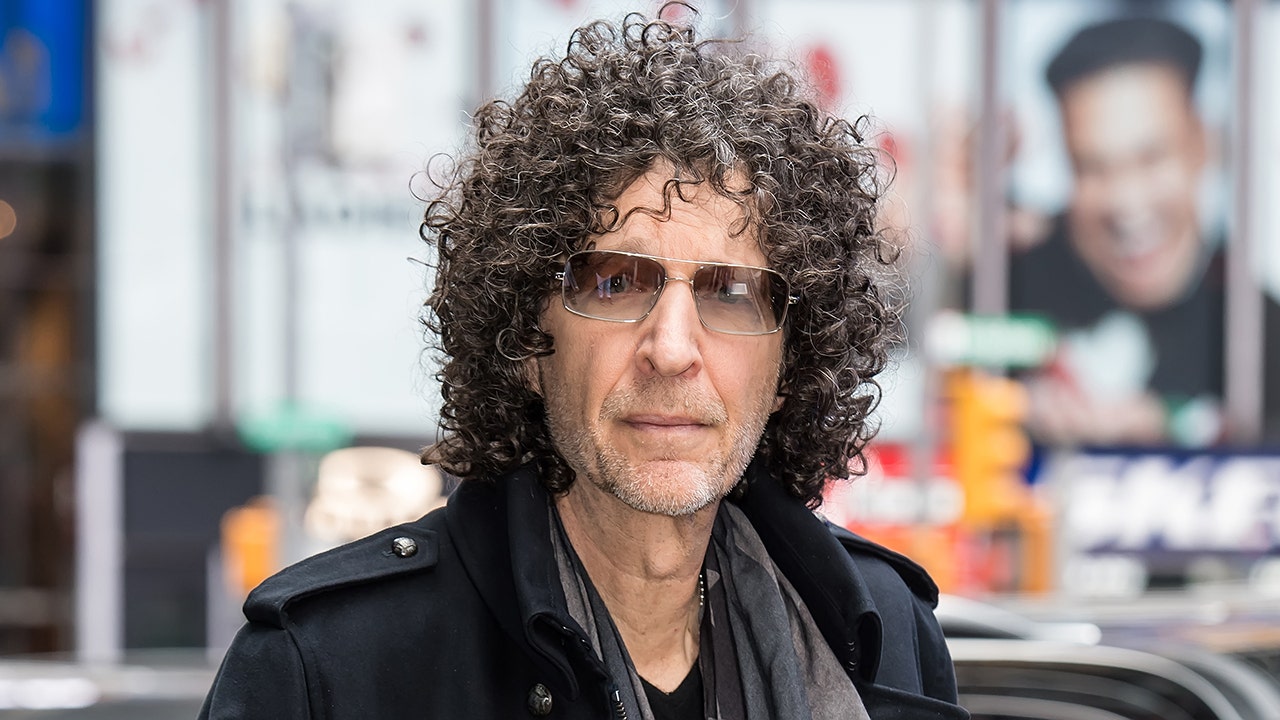‘Struggling to feel emotions and feel numb. Please help!’

Dear Haya,
I am unable to feel happy and feel very numb. Not sure if it’s related to certain past traumas or not, but I don’t feel certain emotions anymore. I hardly remember the last time I was happy.
Please guide me about how I can feel more connected to my emotions.

Dear anon,
Thank you for reaching out and sharing what you’re going through. It takes courage to name the sense of emotional numbness you’re experiencing — a state that can often feel confusing, isolating, and even frightening. While I don’t know the full extent of your history, what you’ve described is something many individuals experience, particularly those who’ve endured prolonged stress, unresolved trauma, or emotional overwhelm.
The fact that you are reaching out and are self aware is a positive sign on its own. And the first sign of recovery is to recognise the signs.
In response to your query, happiness is an emotion like many other emotions that is meant to be felt. That doesn’t mean that we will be feeling happy all the time, but there will be moments that we will experience moments of happiness.
If in the past, you have not experienced any kind of emotion — that is alarming.
Let’s take a look to see understand emotional numbness.
The first thing to know is that emotional numbness is not a flaw or failure — it’s actually your body’s way of protecting you. When emotional pain becomes too overwhelming or lasts for too long, your nervous system may respond by “shutting down” your access to feelings. This is a survival response, not a conscious choice. It’s how your system tries to protect you from pain that felt too big to handle at the time.
This kind of shutdown is especially common in people who’ve experienced trauma. And it’s important to understand — trauma doesn’t always look like one big dramatic event. It can be anything that felt too much, too fast, or too soon for your nervous system to process. It might have happened in childhood, during your teenage years, or even in adulthood. And sometimes, it’s not what happened, but how alone or unsafe you felt while it was happening.
When these experiences aren’t fully processed, they build up and we often suppress the emotions tied to them — not because we want to, but because we had to, just to get through. Over time, this emotional “freezing” becomes second nature. It can make you feel cut off not just from painful emotions, but also from joy, connection, aliveness, and even love. That’s the painful paradox of emotional numbness: it keeps the pain out, but it also keeps the good stuff out too.
You might not consciously remember everything that happened, but your body does. As the saying goes, “the body keeps the score.” Every experience we go through — especially the ones we don’t fully process — leaves a mark in the nervous system. And when the nervous system feels stuck, it can lead to a persistent state of emotional numbness.
Our nervous system has several natural responses to stress: fight, flight, freeze, and fawn. These are all normal and necessary survival states. Ideally, we move in and out of them depending on what we need in the moment. But when we get stuck in one of them — like the freeze state — it can lead to feeling emotionally shut down, disconnected, or numb.
From what you’ve described, it sounds like your nervous system might be in a freeze response. This means your body is trying to protect you by staying still, quiet, and emotionally “offline.” It’s not your fault. And you’re not broken.
The good news is: just like your system adapted to survive, it can also learn to feel again. Healing is possible. It begins with understanding what’s happening inside you, gently reconnecting with your body, and learning that it’s safe to feel again — one small step at a time.
Let’s see how you can recover:
The first step toward reconnection is not to force feelings to return, but to gently make space for them. Recovering from a freeze state in the nervous system is possible — but it takes patience, compassion, and gentle steps. The freeze response often happens when the body feels overwhelmed and helpless, so healing requires creating a sense of safety, connection, and movement again — slowly and consistently.
1. Start with safety
Your nervous system needs to know that you’re safe now, even if you didn’t feel safe in the past. This starts with developing emotional safety within yourself. Are there moments in your day when you feel even a little safe, calm, or grounded? Try to build awareness around those micro-moments and expand them slowly. Recognize them. Reassure yourself mentally: “I am safe right now.” You might not feel it immediately, but repeating this gently can start to rewire your system.
2. Reconnect with the body — gently
Mindfulness practices — like body scans, grounding or gentle breathwork — can help you reconnect with the sensations in your body, which are the gateway to emotion. Start your mornings with breath work (they’re are many guided meditations that can help you with this e.g. insight timer, calm)
3. Name what you feel (even if it’s nothing)
Try saying out loud or writing: “Right now, I feel numb or i dont know what im feeling ” Naming it without judging it creates space. Even if its nothingnesss its still a form of emotional honesty. Over time, you might notice glimmers of other emotions — like sadness, calm, or even curiosity.
4. Engage in creative expression work and movement
Expression and movement are great ways to heal the nervous system. For example journaling , music, or light movement like yoga or walking will aid you in expressing and releasing what is stored within.
5. Work with a trauma-informed therapist (if possible)
Therapists trained in somatic therapy, EMDR, or polyvagal-informed approaches can be deeply supportive in guiding you back into a regulated state.
Remember, you are not broken. Numbness isn’t the absence of emotion — it’s your body’s way of coping with too much, too fast, for too long. Coming out of a freeze state isn’t about snapping out of it; it’s more like slowly thawing after being in the cold for a long time. As sensations and emotions begin to return, it may feel uncomfortable — but that’s a sign your system is waking up. Healing doesn’t happen all at once, but gradually, and with care. Give yourself permission to move at your own pace. Your body is wise — it’s been protecting you, and with gentle support, it can learn that it’s safe to feel again.
— Haya

Haya Malik is a psychotherapist, Neuro-Linguistic Programming (NLP) practitioner, corporate well-being strategist and trainer with expertise in creating organisational cultures focused on well-being and raising awareness around mental health.
Send her your questions by filling this form or email to [email protected]
Note: The advice and opinions above are those of the author and specific to the query. We strongly recommend our readers consult relevant experts or professionals for personalised advice and solutions. The author and Geo.tv do not assume any responsibility for the consequences of actions taken based on the information provided herein. All published pieces are subject to editing to enhance grammar and clarity.
setTimeout(function(){
var scriptElement=document.createElement(‘script’);
scriptElement.type=”text/javascript”;
scriptElement.setAttribute=”async”;
scriptElement.src=”https://www.geo.tv/assets/front/js/lazysizes.min.js”;
document.body.appendChild(scriptElement);
}, 1000);
//setTimeout(function(){ $(‘.medium-insert-images’).find(‘figure’).show() }, 3000);
var loadDeferredJS = function() {
var lazyloadjs = [‘https://www.geo.tv/assets/front/js/lazysizes.min.js’];
var alljs = [‘https://www.geo.tv/assets/front/js/ui/thirdparty.js?ver=133’];
var jqueryjs = [‘https://www.geo.tv/assets/front/js/ui/jquery.min_new.js?ver=43’];
var bootstrapjs = [‘https://www.geo.tv/assets/front/js/ui/bootstarp.js?ver=55’];
var sliderjs = [‘https://www.geo.tv/assets/front/js/ui/swiper.min.js’];
var firebaseappjs = [‘https://www.gstatic.com/firebasejs/8.10.1/firebase-app.js’];
var firebasejs = [‘https://www.gstatic.com/firebasejs/8.10.1/firebase-analytics.js’,’https://www.gstatic.com/firebasejs/8.10.1/firebase-messaging.js’];
var firebasejs_tokenjs = [‘https://www.geo.tv/assets/front/js/push_notification.js?v=1.511’];
var alljscustom = [‘https://www.geo.tv/assets/front/js/ui/my.js?ver=232366′,’https://www.geo.tv/assets/front/js/mycustom.js?ver=646’];
/*setTimeout(function(){
lazyloadjs.forEach(function (item,index) {
var scriptElement=document.createElement(‘script’);
scriptElement.type=”text/javascript”;
scriptElement.src = item;
document.body.appendChild(scriptElement);
});
}, 500);*/
setTimeout(function(){
jqueryjs.forEach(function (item,index) {
var scriptElement=document.createElement(‘script’);
scriptElement.type=”text/javascript”;
scriptElement.src = item;
document.body.appendChild(scriptElement);
});
}, 1000);
// setTimeout(function(){
// bootstrapjs.forEach(function (item,index) {
// var scriptElement=document.createElement(‘script’);
// scriptElement.type=”text/javascript”;
// scriptElement.src = item;
// document.body.appendChild(scriptElement);
// });
// }, 2000);
const jqueryIntervalcheck = setInterval(function () {
if(typeof jQuery !== “undefined”){
clearInterval(jqueryIntervalcheck);
setTimeout(function(){
sliderjs.forEach(function (item,index) {
if(item == ‘https://www.geo.tv/assets/front/js/ui/swiper.min.js’){
var story_embed_gallery = $(‘.story-area’).find(‘.embedgallery’).length;
//var story_embed_gallery = 0;
if(parseInt(story_embed_gallery) > 0){
var scriptElement=document.createElement(‘script’);
scriptElement.type=”text/javascript”;
scriptElement.src = item;
document.body.appendChild(scriptElement);
}
}
});
}, 100);
setTimeout(function(){
alljscustom.forEach(function (item,index) {
var scriptElement=document.createElement(‘script’);
scriptElement.type=”text/javascript”;
scriptElement.src = item;
document.body.appendChild(scriptElement);
});
}, 1300);
/*const jqueryIntervalcount = setInterval(function () {
if(typeof jQuery !== “undefined”){
clearInterval(jqueryIntervalcount);*/
if($(‘.infogram-embed’).length > 0 || $(’embedinfogram’).length > 0)
{
!function (e, t, n, s) {
var i = “InfogramEmbeds”, o = e.getElementsByTagName(t)[0], d = /^http:/.test(e.location) ? “http:” : “https:”;
if (/^/{2}/.test(s) && (s = d + s), window[i] && window[i].initialized)window[i].process && window[i].process(); else if (!e.getElementById(n)) {
var a = e.createElement(t);
a.async = 1, a.id = n, a.src = s, o.parentNode.insertBefore(a, o)
}
}(document, “script”, “infogram-async”, “https://e.infogram.com/js/dist/embed-loader-min.js”);
}
if($(‘.flourishClass’).length > 0)
{
var scriptElement=document.createElement(‘script’);
scriptElement.type=”text/javascript”;
scriptElement.setAttribute=”async”;
scriptElement.src=”https://public.flourish.studio/resources/embed.js”;
document.body.appendChild(scriptElement);
}
if($(‘.apester-media’).length > 0)
{
var scriptElement=document.createElement(‘script’);
scriptElement.type=”text/javascript”;
scriptElement.setAttribute=”async”;
scriptElement.src=”https://static.apester.com/js/sdk/latest/apester-sdk.js”;
document.body.appendChild(scriptElement);
}
if($(‘.twitter-tweet’).length > 0)
{
var tweetObj = document.getElementsByClassName(‘tweetPost’);
var counter_tweet = 0;
if (tweetObj.length == 0) {
tweetObj = document.getElementsByClassName(‘twitter-tweet’);
$.each(tweetObj, function (i, v) {
$(this).attr(‘id’, ‘twitter-post-widget-‘ + i);
});
} else {
$.each(tweetObj, function (i, v) {
if($(this).find(‘.twitter-tweet’).length > 0){
$(this).find(‘.twitter-tweet’).attr(‘id’, ‘twitter-post-widget-‘ + counter_tweet);
counter_tweet++;
}
});
}
$.getScript(‘https://platform.twitter.com/widgets.js’, function () {
var k = 0;
var tweet = document.getElementById(‘twitter-post-widget-‘ + k);
var tweetParent, tweetID;
while (tweet) {
tweetParent = tweet.parentNode;
//tweetID = tweet.dataset.tweetId;
tweetID = tweetParent.getAttribute(“id”);
if(tweetID === null){
tweetID = tweet.dataset.tweetId;
}
//var tweetVideoClass = tweet.getAttribute(‘class’).split(‘ ‘)[0];
$(tweet).remove();
twttr.widgets.createTweet(
tweetID,
tweetParent
);
k++;
tweet = document.getElementById(‘twitter-post-widget-‘ + k);
}
});
/*==============*/
var tweetObjVid = document.getElementsByClassName(‘tweetVideo’);
var counter_tweet = 0;
if (tweetObjVid.length == 0) {
tweetObjVid = document.getElementsByClassName(‘twitter-video’);
$.each(tweetObjVid, function (i, v) {
$(this).attr(‘id’, ‘twitter-vid-widget-‘ + i);
});
} else {
$.each(tweetObjVid, function (i, v) {
if($(this).find(‘.twitter-video’).length > 0){
$(this).find(‘.twitter-tweet’).attr(‘id’, ‘twitter-vid-widget-‘ + counter_tweet);
counter_tweet++;
}
});
}
$.getScript(‘//platform.twitter.com/widgets.js’, function () {
var v = 0;
var tweetVid = document.getElementById(‘twitter-vid-widget-‘ + v);
var tweetParentVid, tweetIDVid;
while (tweetVid) {
tweetParentVid = tweetVid.parentNode;
//tweetIDVid = tweetVid.dataset.tweetId;
tweetIDVid = tweetParentVid.getAttribute(“id”);
if(tweetIDVid === null){
tweetIDVid = tweet.dataset.tweetId;
}
$(tweetVid).remove();
twttr.widgets.createVideo(
tweetIDVid,
tweetParentVid
);
v++;
tweetVid = document.getElementById(‘twitter-vid-widget-‘ + v);
}
});
}
if($(‘.instagram-media’).length > 0){
var scriptElement=document.createElement(‘script’);
scriptElement.type=”text/javascript”;
scriptElement.setAttribute=”async”;
scriptElement.src=”https://platform.instagram.com/en_US/embeds.js”;
document.body.appendChild(scriptElement);
}
if($(‘.tiktok-embed’).length > 0){
var scriptElement=document.createElement(‘script’);
scriptElement.type=”text/javascript”;
scriptElement.setAttribute=”async”;
scriptElement.src=”https://www.tiktok.com/embed.js”;
document.body.appendChild(scriptElement);
}
if($(‘.threadsPost’).length > 0){
var scriptElement=document.createElement(‘script’);
scriptElement.type=”text/javascript”;
scriptElement.setAttribute=”async”;
scriptElement.src=”https://www.threads.net/embed.js”;
document.body.appendChild(scriptElement);
}
if($(‘.fb-video’).length > 0 || $(‘.fb-post’).length > 0){
var container_width = $(window).width();
if(container_width 0){
let embed_url = $(‘.fb-video’).attr(‘data-href’);
let htmla=”
‘;
$(‘.fb-video’).parent(‘.embed_external_url’).html(htmla);
}
else{
let embed_url = $(‘.fb-post’).attr(‘data-href’);
let htmla=”
‘;
}
}
$(‘body’).prepend(‘
‘);
var scriptElement=document.createElement(‘script’);
scriptElement.type=”text/javascript”;
scriptElement.setAttribute=”async”;
scriptElement.src=”https://connect.facebook.net/en_US/sdk.js#xfbml=1&version=v2.11&appId=580305968816694″;
document.body.appendChild(scriptElement);
}
var scriptElement=document.createElement(‘script’);
scriptElement.type=”text/javascript”;
scriptElement.setAttribute=”async”;
scriptElement.src=”//dcc4iyjchzom0.cloudfront.net/widget/loader.js”;
document.body.appendChild(scriptElement);
/*}
},100);*/ }
},100);
};
var raf = window.requestAnimationFrame || window.mozRequestAnimationFrame ||
window.webkitRequestAnimationFrame || window.msRequestAnimationFrame;
var loadDeferredJSCaptcha = function() {
var addJSNode = document.getElementById(“captchejs”);
var replacement = document.createElement(“div”);
replacement.innerHTML = addJSNode.textContent;
document.body.appendChild(replacement);
addJSNode.parentElement.removeChild(addJSNode);
};
window.addEventListener(‘load’, loadDeferredJS);
//window.addEventListener(‘load’, loadDeferredJSCaptcha);
[title_words_as_hashtags





